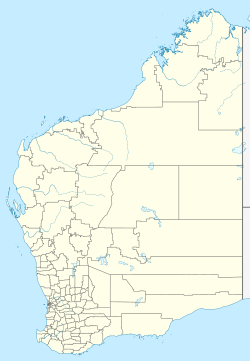 | |
| Location | |
|---|---|
| Location | Ora Banda |
| State | Western Australia |
| Country | Australia |
| Coordinates | 30°22′54″S121°09′34″E / 30.38167°S 121.15944°E |
| Production | |
| Products | Nickel, cobalt |
| History | |
| Opened | 1999 |
| Closed | 2008 |
| Owner | |
| Company | Wingstar Investments Pty Ltd |
| Year of acquisition | 2014 |
The Cawse mine is a mothballed laterite nickel mine near Ora Banda in Western Australia. Cawse has a remnant Proven Reserve of 3.757 million tonnes of ore grading 0.65% nickel for 24,400 tonnes of nickel, as of 31 December 2009. [1]
The mine, opened in 1999, was Australia's first high pressure acid leaching operation to mine and treat laterite nickel ore to produce nickel metal on site. [2] It was closed in October 2008, due to depressed metal prices. [3]
Cawse was developed by Centaur Mining & Exploration, with an annual capacity of 9,000 tonnes of nickel and up to 2,000 tonnes of cobalt. [4]
In 2001 it was sold to OM Group, and subsequently in 2007 was sold to Norilsk Nickel. In 2014 Norilsk Nickel, having placed the mine and plant on care-and-maintenance in 2008, sold it to Wingstar Investments for an undisclosed amount. [5] [6] [7]
